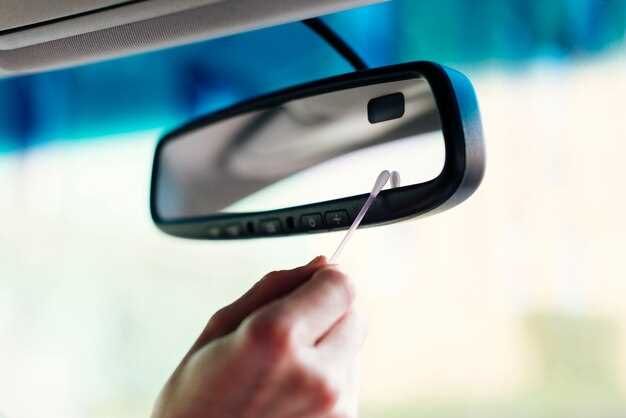
Replacing your car’s side mirrors may seem daunting, but with the right guidance and tools, it can be a straightforward task. Side mirrors play a critical role in ensuring your safety on the road by providing visibility of adjacent lanes and helping prevent accidents. Whether your mirror is broken, cracked, or simply outdated, knowing how to replace it yourself can save you time and money.
This comprehensive guide will take you through each step of the process, from assessing whether you need a replacement to properly installing the new mirror. You’ll learn about the necessary tools, safety precautions, and tips to ensure a seamless installation.
By the end of this guide, you will be equipped with the knowledge and confidence to tackle this project, enhancing both the functionality and appearance of your vehicle. Let’s get started on restoring your car’s side mirrors!
Choosing the Right Replacement Mirror for Your Vehicle
Selecting the correct replacement mirror for your vehicle is crucial for safety and functionality. Start by identifying your vehicle’s make, model, and year, as this information is essential for compatibility. Many manufacturers offer specific part numbers for their mirrors, which can be found in your vehicle’s manual or online.
Next, consider the type of mirror you require. Side mirrors come in various styles, including manual and power-adjustable options. If your original mirror had features like heating, turn signals, or blind-spot detection, ensure that the replacement mirror includes these functions to maintain the same level of safety and convenience.
It’s also important to evaluate the quality of the mirror. Choose from well-known brands or OEM (Original Equipment Manufacturer) parts, as they tend to provide better durability and fit. Aftermarket mirrors may be more affordable, but check reviews and warranties to ensure they meet your requirements.
The installation process can also influence your choice. Some replacement mirrors are designed for easy installation, while others may require professional help. If you prefer a DIY approach, look for mirrors that come with clear instructions and all necessary hardware.
Finally, compare prices from different suppliers. While it is tempting to opt for the cheapest option, ensure you are not compromising on quality. A proper replacement mirror can enhance visibility and ensure safe driving.
Tools and Materials Needed for Side Mirror Replacement

Replacing a car side mirror requires specific tools and materials to ensure a successful and efficient process. Below is a detailed list to help you prepare.
Tools:
1. Screwdriver Set: A set of screwdrivers, including both flathead and Phillips screwdrivers, is essential for removing the screws that secure the mirror assembly.
2. Socket Wrench Set: A socket wrench may be necessary for bolts that secure the mirror to the car frame. Ensure you have various socket sizes to fit different bolts.
3. Pliers: Pliers can be useful for gripping and manipulating wires when disconnecting the electrical components of powered mirrors.
4. Trim Removal Tool: This tool helps to safely remove any plastic trim pieces that may be obstructing access to the side mirror.
5. Torque Wrench: If your vehicle requires specific torque settings for reinstallation, having a torque wrench will ensure the bolts are tightened properly.
Materials:
1. Replacement Side Mirror: Purchase a compatible side mirror for your make and model. Ensure it matches features like color, heating, and electrical connections.
2. Wire Connectors: If you are replacing an electric side mirror, new wire connectors may be required for properly reconnecting the wiring harness.
3. Adhesive or Double-Sided Tape: In cases where the mirror glass or casing is being replaced, high-strength adhesive or automotive double-sided tape may be necessary.
4. Clean Cloth: A clean cloth helps wipe down surfaces and ensure a secure fit during installation.
5. Safety Glasses and Gloves: Wearing safety glasses and gloves protects you during the replacement process, especially when handling sharp edges or glass pieces.
Having the right tools and materials on hand will streamline the side mirror replacement process, making it safer and more efficient.
Installation Process: Removing the Old Mirror and Fitting the New One

Begin by gathering the necessary tools for the job, including a flathead screwdriver, a socket wrench, and a trim removal tool. Make sure you have the new side mirror ready for installation.
First, locate the screws or bolts securing the old mirror. These are often found on the inner side of the door panel or around the base of the mirror itself. Use the socket wrench to loosen and remove any bolts. If screws are used, carefully pry off the plastic cover using the trim removal tool to access them.
Once the fasteners are removed, gently pull the old mirror away from the door. Be cautious to ensure that no wires or connectors remain attached. If your vehicle has powered mirrors, disconnect the electrical harness by pressing on the release tab and pulling it apart.
With the old mirror fully detached, prepare to fit the new one. Begin by connecting the electrical harness to the new mirror, ensuring it clicks into place securely. Position the new mirror against the door, aligning it with the mounting holes.
Insert the bolts or screws through the mounting holes of the new mirror. Tighten them using the socket wrench, making sure the mirror is securely fastened but avoiding over-tightening, which may damage the components.
Once the mirror is mounted, reattach any plastic covers that may have been removed earlier. Double-check the mirror’s positioning and adjust as necessary to ensure it provides optimal visibility.
Finally, test the mirror’s adjustment settings if applicable, ensuring that it functions correctly. Clean the new mirror surface for clear visibility and complete the installation process.





